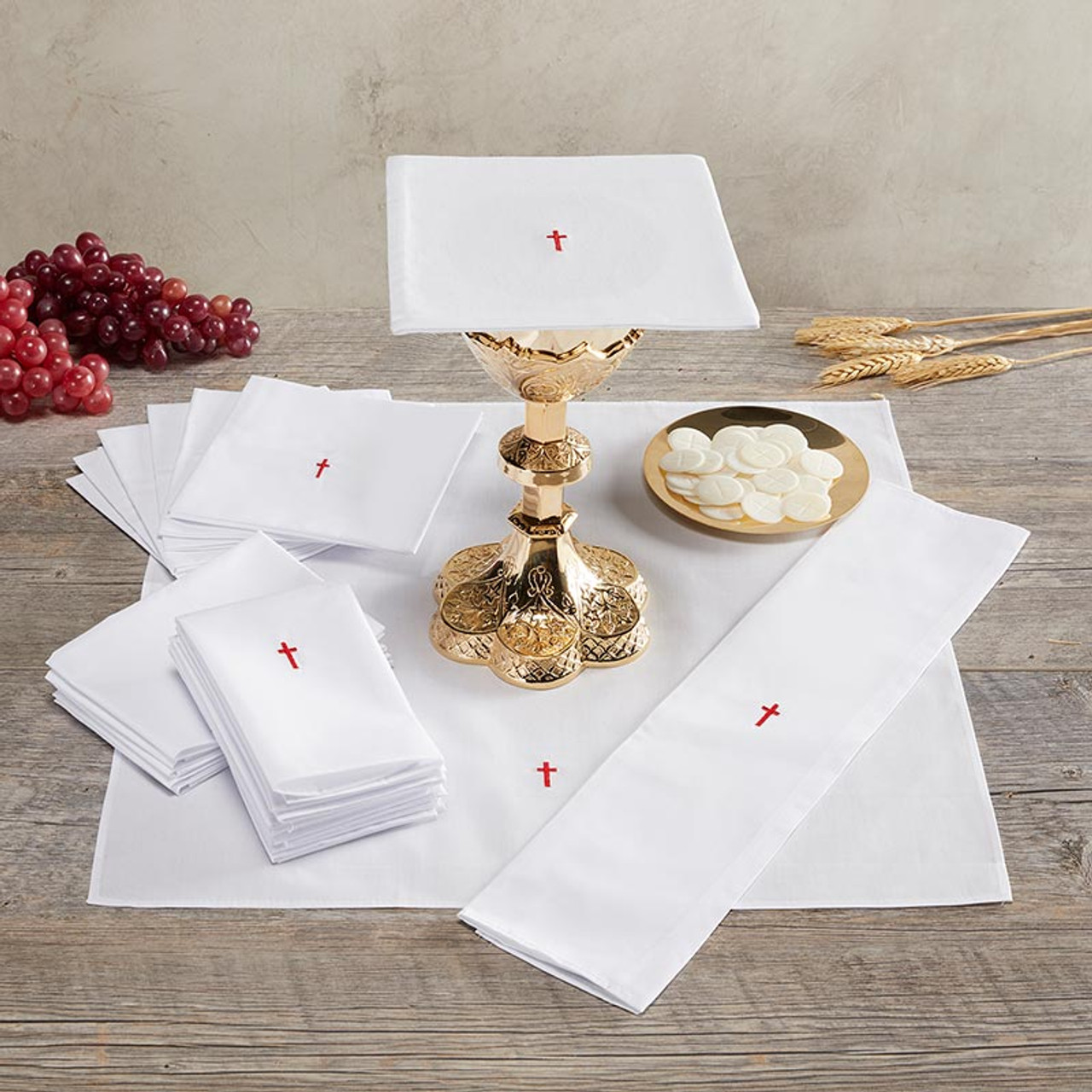
What is a purificator? A purificator is a small, white linen cloth used in Christian liturgy, particularly during the Eucharist. Its primary purpose is to wipe the chalice after each communicant partakes of the wine, ensuring cleanliness and reverence. Often embroidered with a small cross, it symbolizes purity and the sacred nature of the sacrament. The purificator also cleans the paten and ciborium, which hold the consecrated bread and wine. This humble yet essential item plays a significant role in maintaining the sanctity of the Eucharistic celebration. Understanding its use and symbolism can deepen one's appreciation for liturgical traditions.
What is a Purificator?
A purificator is a small piece of cloth used in Christian liturgy, particularly in the Roman Catholic Church. It serves a specific purpose during the celebration of the Eucharist. Here are some interesting facts about this sacred item.
- The purificator is typically made of linen or cotton, symbolizing purity and cleanliness.
- It measures around 12 inches by 18 inches, making it a small but essential item on the altar.
- This cloth is used to wipe the chalice after each communicant drinks from it, ensuring hygiene.
- It also cleans the paten, the small plate that holds the Eucharistic bread.
- Often, a small cross is embroidered on the purificator, usually in the center or corner.
Historical Significance
The purificator has a rich history that dates back centuries. Its use and symbolism have evolved over time.
- The tradition of using a purificator can be traced back to the early Christian Church.
- Initially, it was a simple cloth, but over time, it became more ornate with embroidery.
- The use of linen for the purificator is rooted in biblical references, as linen was considered a pure fabric.
- During the Middle Ages, the purificator became more standardized in size and design.
- It symbolizes the cloth used by Jesus to wash the feet of his disciples, representing service and humility.
Symbolism in Liturgy
The purificator holds deep symbolic meaning in the liturgy, reflecting various aspects of faith and tradition.
- It represents the purity required to handle the sacred elements of the Eucharist.
- The act of wiping the chalice symbolizes the cleansing of sins.
- It also signifies the care and reverence given to the Eucharist.
- The cross on the purificator reminds the faithful of Christ's sacrifice.
- Its use during the Mass highlights the importance of ritual cleanliness.
Practical Uses
Beyond its symbolic significance, the purificator has practical uses during the Eucharistic celebration.
- It ensures that no remnants of the consecrated wine are left in the chalice.
- The purificator helps prevent the spread of germs among communicants.
- It is often used to cover the chalice when not in use, protecting it from dust and insects.
- During the purification of the vessels, the purificator assists in drying them thoroughly.
- It is carefully laundered and ironed, maintaining its cleanliness and readiness for each Mass.
Final Thoughts on Purificators
Purificators, those small yet significant pieces of cloth, play a crucial role in religious ceremonies. They’re not just simple linens; they hold deep symbolic meaning and are essential for maintaining the sanctity of the Eucharist. Made from pure white linen or cotton, they’re meticulously cared for, often hand-washed and ironed to perfection. Their use dates back centuries, reflecting the rich traditions and reverence within the church. Understanding these facts about purificators gives us a glimpse into the meticulous care and respect given to religious rituals. Whether you’re a history buff, a religious scholar, or just curious, these details highlight the importance of even the smallest elements in grand traditions. Next time you see a purificator, you’ll know it’s more than just a piece of cloth; it’s a symbol of purity and devotion.
Was this page helpful?
Our commitment to delivering trustworthy and engaging content is at the heart of what we do. Each fact on our site is contributed by real users like you, bringing a wealth of diverse insights and information. To ensure the highest standards of accuracy and reliability, our dedicated editors meticulously review each submission. This process guarantees that the facts we share are not only fascinating but also credible. Trust in our commitment to quality and authenticity as you explore and learn with us.


